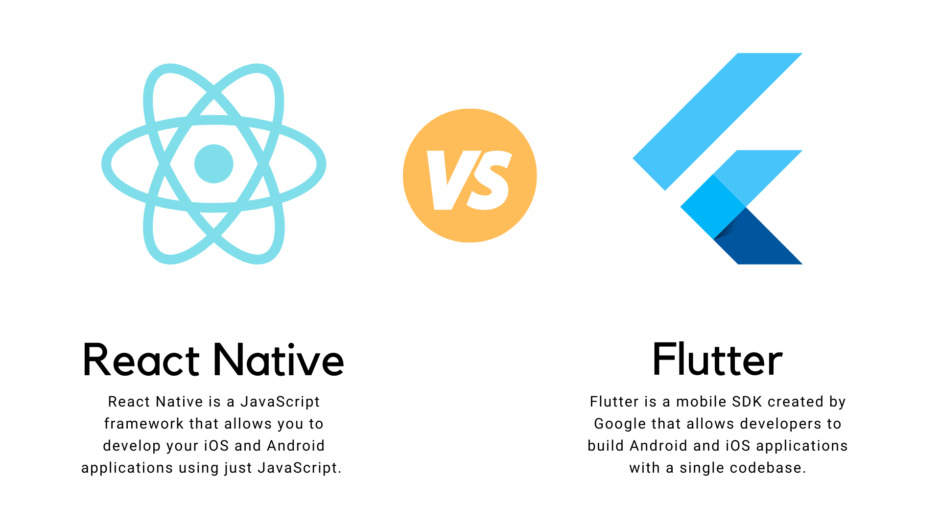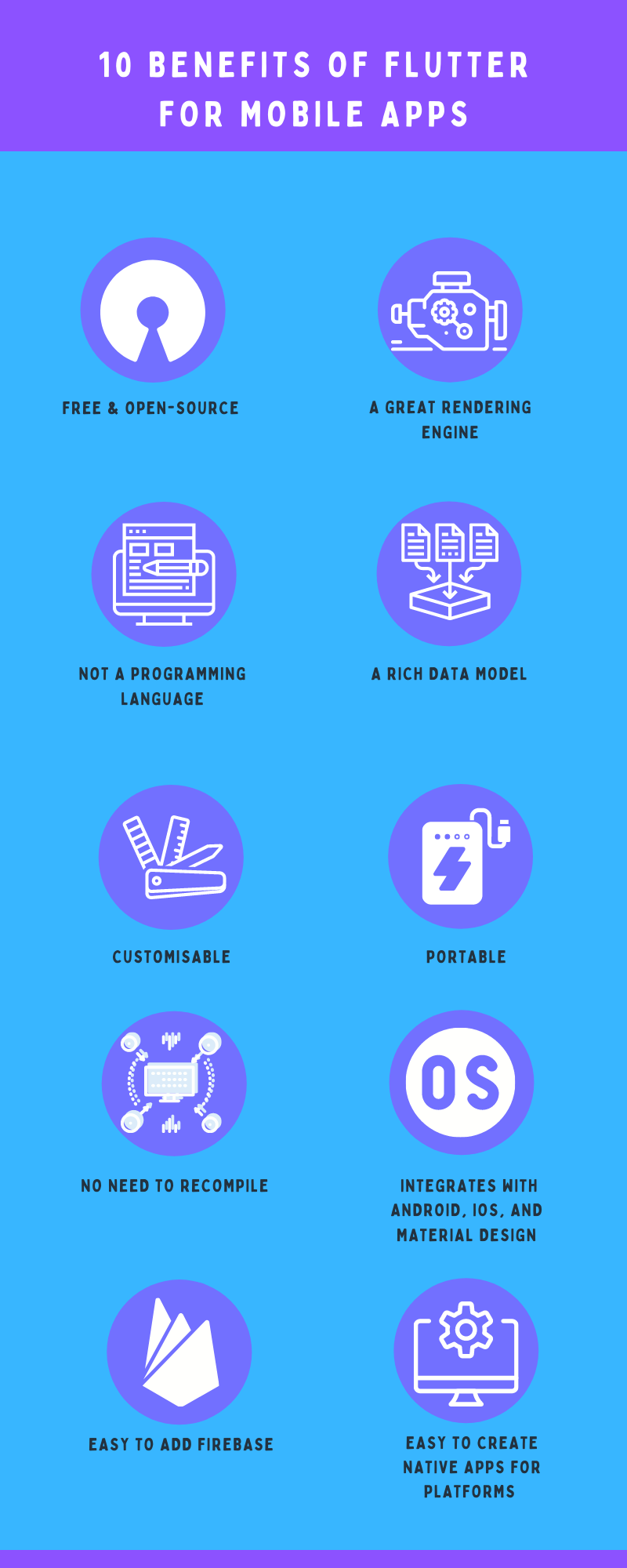The world of mobile development has two major contenders on the scene: Flutter and React Native. They both offer similar technology, speed, and ease of use, but there are some key differences that will affect which one you choose for your project. If you’re looking to make an informed decision about which framework is right for you, this article should help.
In this blog post, we look at the various advantages and disadvantages of Flutter and React Native.
We also delve into why Flutter mobile is the best choice when it comes to creating beautiful designs on apps.
Lastly, we consider the benefits of using Flutter for mobile.
Flutter Vs React Native: Pros And Cons
What is Flutter? Flutter is a mobile SDK (Software Development Kit) created by Google that allows developers to build cross-platform applications (both Android and iOS) with a single codebase. It offers higher level language features like Dart combined with C++ code generation on the back end which translates to more concise code with less boilerplate.

What is React Native? React Native is a JavaScript framework that allows you to develop your iOS and Android applications using just JavaScript. Unlike Flutter where you’re using Dart coding on the back end, with React Native you get to leverage the full power of JavaScript thanks to its virtual DOM implementation.
To make the process of understanding easier, we have listed the top 5 advantages and disadvantages of both programming languages.
Flutter
Pros
- Hot Reload = fast coding
- One codebase, 2 mobile platforms
- Up to 50% less testing
- Faster apps
- Designs your users will love
Cons
- Size of the developer community, which is comparatively smaller
- Libraries & support – impressive, but still not as rich as native development
- Continuous Integration support
- Platform risk
- Size of apps
React Native
Pros
- Fast refresh = fast coding
- One codebase, 2 mobile platforms
- It uses JavaScript
- Developer freedom of choice
- An active – and vast – community
Cons
- It isn’t really native
- Fewer components out of box
- Lots of abandoned packages
- Fragile UI
- Apps are bigger than native ones
Flutter offers great features like Hot Reload and Build for iOS and Android, whereas React Native only has one. Flutter is also more efficient: its widgets can run faster than those in React Native, and it also supports memory safety which gives developers the ability to avoid common performance issues.
Thanks to this performance difference, Flutter provides a much better development experience over React Native. And finally, Flutter is easier to learn as well.
We all know that UI/UX are important aspects in mobile app development and flutter mobile development. And, it is this topic we are focusing on in the next section of this article.
Is Flutter The Answer To Cross Platform UI Nightmares?
In short: it is.
Flutter alone is a framework that is only used for getting the UI aspect of a mobile app done. Flutter is powered with Dart language. So, everything else apart from the UI is using Dart.
Flutter is designed with modern UI concepts in mind. It’s used by companies like Airbnb and Myntra to build their mobile apps. And unlike most other frameworks that are made for web browsers, Flutter was designed from the ground up with native UI components in mind so your app can have a native look and feel without sacrificing performance or user experience.
It’s been said that if you can build a UI in Flutter, you can build it in any other tool. Flutter is just that powerful. If you’re a designer, you’ll love the freedom and options to take your designs from concept to finished app in record time. And if you’re a developer, the process will feel right at home with familiar tools and concepts.
All of this makes Flutter a great tool for UI development, and we’ve jotted down ten facts that easily make Flutter the best for this purpose.
- Flutter offers an intuitive and concise workflow
- It’s fun to learn the basics of Flutter and build something cool
- It has an extremely rich ecosystem both for developers and designers who contribute to its open source community
- It supports all major frameworks out of the box so you don’t have to choose between React Native or native iOS/Android apps by default
- It allows for building stateful UIs that are naturally extensible without compromising performance
- It has a real focus on performance
- It’s easy to prototype quickly without compromising the performance of the final app
- It supports top notch tools right out of the box, including Material Design Studio, Sketch, Framer, Figma and more
- It provides support for adding gestures and features quickly on both iOS/Android
- It’s backed by Google and if that isn’t enough to prove its awesomeness, it’s also open source
Without getting too technical, Flutter uses something called the Skia graphics engine, which is also used by Chrome. This allows Flutter to render apps quickly using vector graphics that are then compiled into jaw dropping pixel-perfect images for each platform.
Flutter also supports animations and other advanced rendering techniques that take advantage of the target platform’s hardware and software to deliver a beautiful, native-like experience.
With Flutter, you can use almost any existing iOS or Android code as a starting point as it uses the Dart language as its core. Flutter allows for many support libraries such as those built on top of React Native and Cocoa Touch for using these libraries to build your app.
This is significantly more productive than React Native with all of its boilerplate code headache. Flutter uses a reactive programming framework that allows for the development of high-performance UI.
Additionally Flutter is a really exciting and useful tool in today’s modern world where cross-platform is the norm. Although we seemed to have partly discussed some of the benefits of Flutter mobile, the next section delves into more benefits.
10 Benefits Of Flutter For Mobile Apps
A mobile app is only as good as its interface. Flutter saves time and simplifies development, so your apps can be better looking, faster to produce, and more responsive.

Here are ten other reasons to use Flutter for your next app:
1) Flutter Is Free & Open-source
The UI library is free, but the tools are not. For iOS, you can develop professional apps for iOS devices with Flutter. The graphic interface of the app is created entirely by code. You don’t need any additional integrated development environment (IDE) or third-party tools for development. You also don’t have to buy a license for each device your app is meant to be used on just to get started with development.
2) A Great Rendering Engine
With Flutter, you fully rely on the Skia rendering engine. It’s an open-source software library for 2D graphics, graphics context programs and other high-performance graphic applications for mobile platforms. This means that Flutter can render 2D graphics just like other modern browsers. This means that your app will be able to render stunning images while delivering a smooth user experience irrespective of the device it is running on.
3) Flutter Is Not A Programming Language
You don’t need to know anything about the programming language when you are writing Flutter apps. There are no interface specifications to learn before creating your app. The code is written using the Dart programming language, which is free and open-source. This means that there are no technical barriers when it comes to creating professional apps for iOS in Flutter.
4) Flutter = A Rich Data Model
Flutter offers a rich data model that is easy to use. This means that you won’t have to build your own components that subscribe to change events, or manually handle notifications or updates for each UI element that needs to be notified of changes.
5) No Need To Recompile
Flutter’s Hot Reload helps you tweak the appearance of your app, experiment with new user flows, and generally iterate faster. Changes are automatically compiled and sent to your phone or emulator for testing. The development cycle is faster because you see real-time changes in the UI instead of waiting for a full compile.
6) Flutter Integrates With Android, iOS, And Material Design UI Widgets
What this means is that you can integrate a large collection of high-quality UI widgets designed by top mobile app development companies and easily use them in your Flutter project.
7) Flutter Is Customisable
Even the animation is customisable. You can add or remove animation any time you want. You have full control over what you want to do with the UI, allowing you to have a great user experience.
8) Flutter Apps Are Portable
Flutter apps are portable, what this means is that the app can run on a wide range of devices. You can convert Flutter apps on Android to native code, iOS code or any other platform without rewriting the source code of the app. This makes it a more seamless and better option for creating an application especially for a large enterprise.
9) Easy To Add Firebase
Once you add Firebase features such as authentication and cloud messaging to your Flutter app, everything is automatically available in the Firebase console without further configuration. This means you can build a single code base to test on a single device or a wide range of devices without writing any extra code. It also increases the reliability of the overall system.
10) Easy To Create Native Apps For Android, iOS, And Other Platforms
What this means is that you can easily create applications for iOS, Android and other mobile devices without writing any additional code. It also supports multiple languages such as Swift, Kotlin and Java.
Conclusion: Flutter is a UI/UX Solution for Mobile App Development
Flutter gives you the ability to build apps for all three major operating systems: iOS, Android, and Windows. With Flutter you get a new UI/UX interface that uses Material Design and responds to gestures like swiping or scrolling which is important in touch screens.
There is no doubt that Flutter is the best programming language out there for mobile app development. It enables iOS and Android developers to build modern native apps for both platforms with a single codebase. Flutter builds on top of the Dart programming language which is scalable and simplifies the development of next generation apps.
Companies such as Google use it for some of their products, such as Adwords and its Adwords app. In short, Flutter mobile enables a smooth and easy cross-platform mobile app development.






